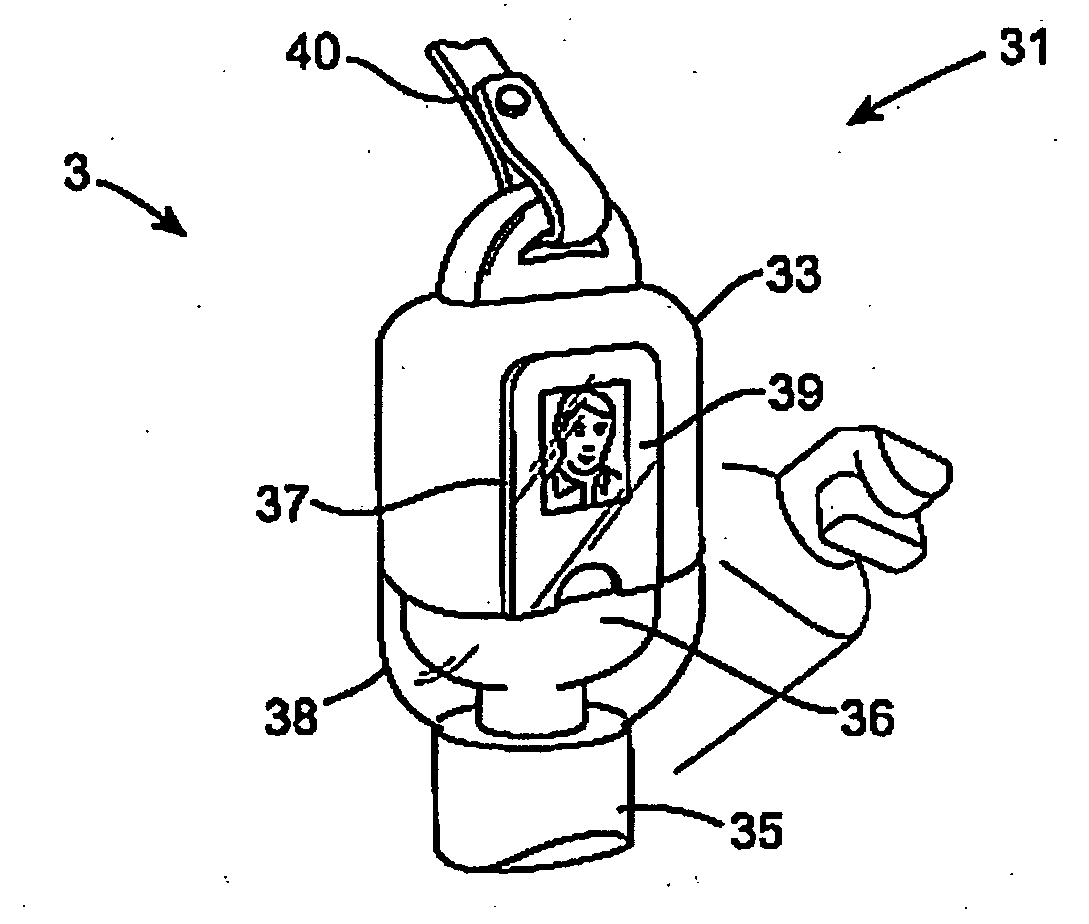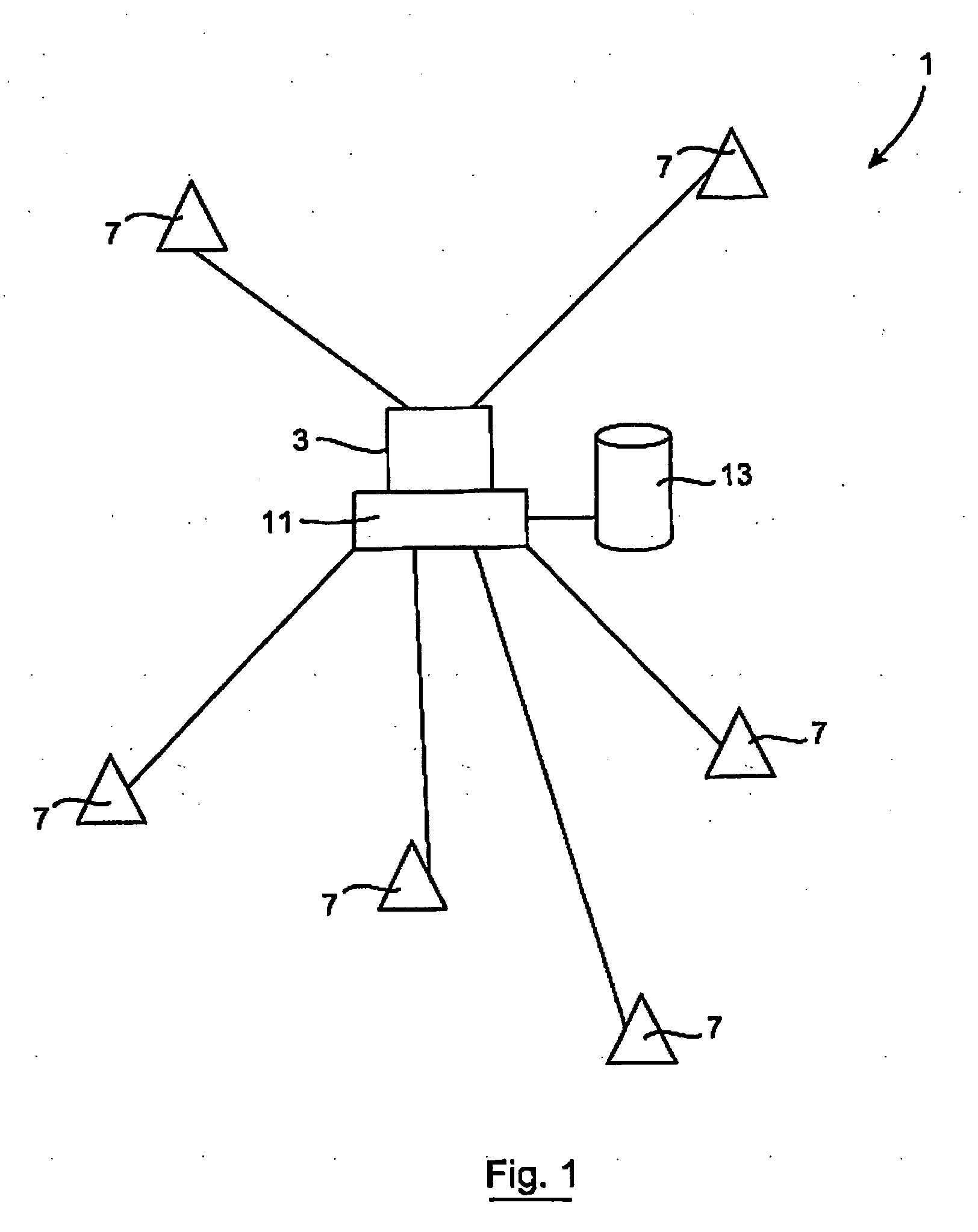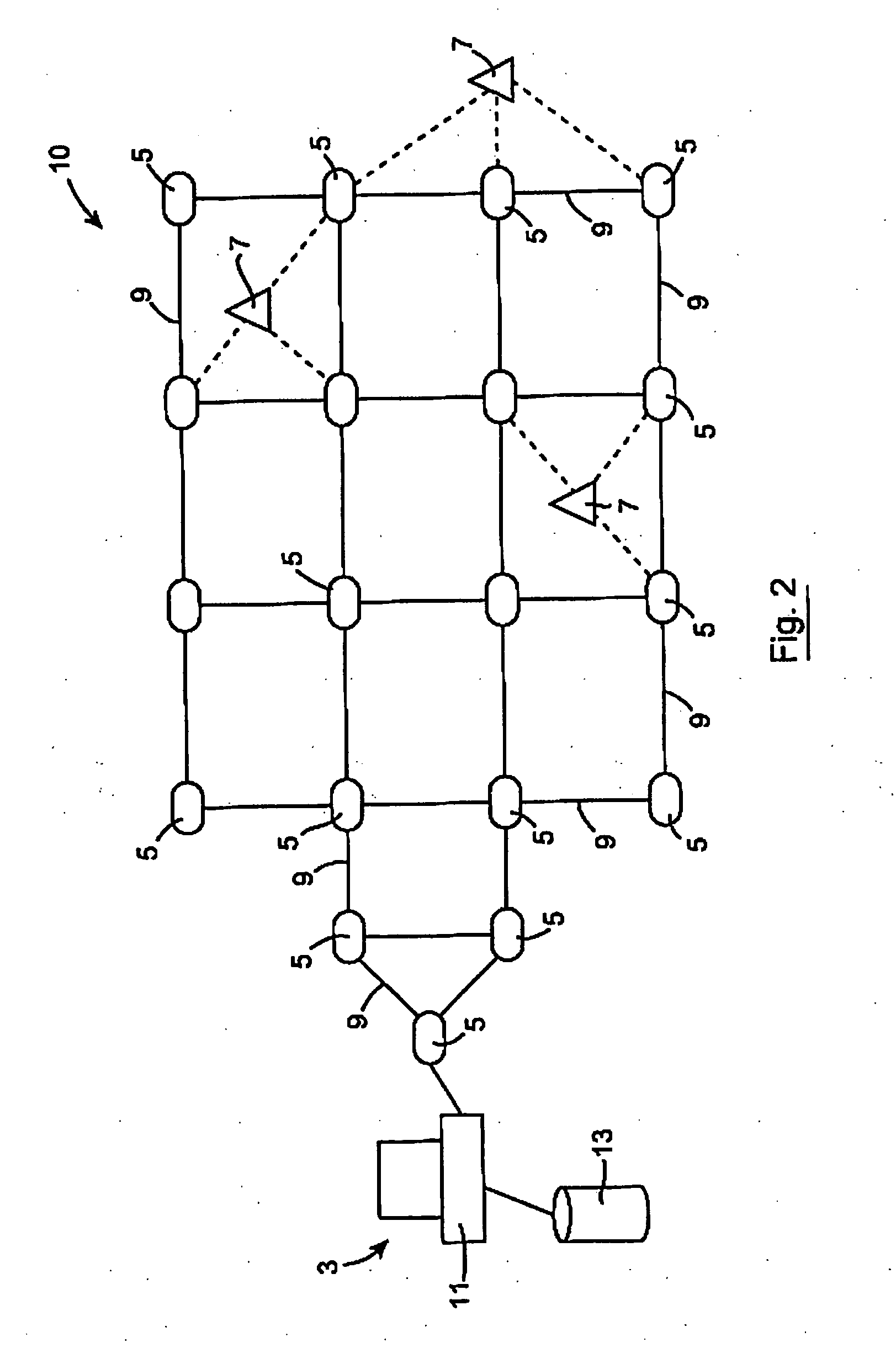System and Method for Monitoring Hygiene Standards Compliance
a technology of hygiene standards and monitoring system, applied in the field of system and method for monitoring hygiene standards compliance, can solve the problems of imposing one of the most significant threats to the provision of safe and effective health care treatment to patients, difficulty in determining straining a health service already under pressure to reduce waiting lists, so as to achieve accurate determination of exact position of employees, increase the effect of positioning accuracy and strong signal
- Summary
- Abstract
- Description
- Claims
- Application Information
AI Technical Summary
Benefits of technology
Problems solved by technology
Method used
Image
Examples
Embodiment Construction
[0051]The invention will now be more clearly understood from the following description of some embodiments thereof given by way of example only with reference to and as illustrated in the accompanying drawings in which: —
[0052]FIG. 1 is a diagrammatic representation of the system according to the present invention;
[0053]FIG. 2 is a diagrammatic representation of an alternative embodiment of the system according to the present invention;
[0054]FIG. 3 is a diagrammatic representation of a floor plan of a hospital ward in which the system shown in FIG. 2 is installed;
[0055]FIG. 4 is a perspective view of one embodiment of a portable antibacterial fluid dispenser incorporating a mobile network unit;
[0056]FIG. 5 is a perspective view of a hand basin unit incorporating a fixed network unit; and
[0057]FIG. 6 is a diagrammatic representation of a ZigBee network that may be used in accordance with the present invention.
[0058]Referring to the drawings and initially to FIG. 1 thereof there is sh...
PUM
 Login to View More
Login to View More Abstract
Description
Claims
Application Information
 Login to View More
Login to View More - R&D
- Intellectual Property
- Life Sciences
- Materials
- Tech Scout
- Unparalleled Data Quality
- Higher Quality Content
- 60% Fewer Hallucinations
Browse by: Latest US Patents, China's latest patents, Technical Efficacy Thesaurus, Application Domain, Technology Topic, Popular Technical Reports.
© 2025 PatSnap. All rights reserved.Legal|Privacy policy|Modern Slavery Act Transparency Statement|Sitemap|About US| Contact US: help@patsnap.com



